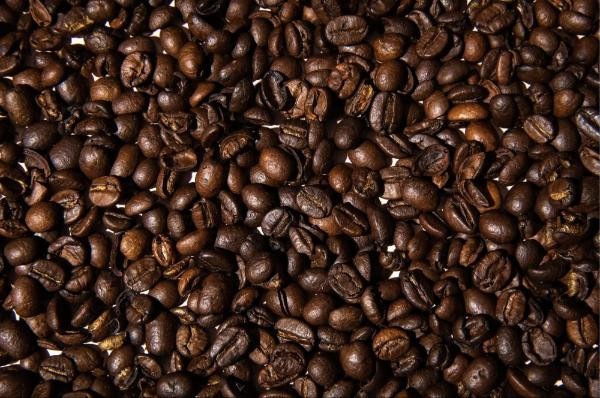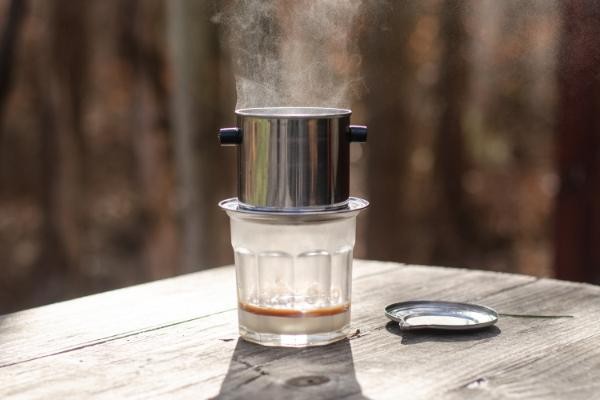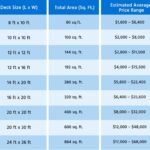Vietnamese coffee caffeine content is renowned for its strength and distinctive flavor, attracting coffee lovers worldwide, and HOW.EDU.VN is here to explore this caffeinated beverage. This article delves into the factors influencing the caffeine levels in Vietnamese coffee, offering insights into its potency and unique characteristics. Discover how bean types, brewing methods, and roast levels contribute to the invigorating experience.
1. Exploring Popular Coffee Varieties in Vietnam
Vietnam’s coffee culture is deeply rooted in two primary bean types: Robusta and Arabica. Each variety offers a unique flavor profile and caffeine content, catering to diverse preferences. Understanding these differences is key to appreciating the nuances of Vietnamese coffee.
1.1. Robusta: The Dominant Bean
Robusta is the most widely cultivated coffee bean in Vietnam, thriving in the country’s climate. This resilience has made Vietnam the world’s leading producer and exporter of Robusta beans. Robusta is known for its hardiness and ability to withstand harsh weather conditions, resulting in a strong, bitter flavor. The Vietnamese Central Highlands offer ideal growing conditions for this variety, producing some of the most authentic and delicious Robusta coffee.
1.2. Arabica: The Milder Alternative
Arabica coffee beans are also popular in Vietnam, offering a milder and more aromatic alternative to Robusta. Arabica beans require specific growing conditions, including warm temperatures, fertile soil, ample sunlight, and high altitudes. While Vietnam’s production of Arabica is less than Robusta, it remains a favorite among those who prefer a smoother, more nuanced coffee experience.
2. Deciphering Vietnamese Coffee Caffeine Content
The caffeine content in Vietnamese coffee typically ranges from 100 to 250 mg per cup. This high caffeine level is a defining characteristic, often likened to the equivalent of three to four espresso shots. However, the exact caffeine content can vary based on several factors.
2.1. The Influence of Bean Type on Caffeine Levels
The type of coffee bean used significantly impacts the caffeine content of Vietnamese coffee. Robusta beans generally contain more caffeine than Arabica beans.
- Arabica: A cup of Arabica coffee (250 ml) contains approximately 120 to 140 mg of caffeine. This makes it a suitable choice for those sensitive to caffeine or who prefer a more subtle flavor.
- Robusta: In contrast, the same amount of Robusta coffee contains around 260 mg of caffeine. This high caffeine content contributes to its strong, bitter taste, making it popular for espresso and instant coffee.
2.2. Comparative Analysis of Caffeine Content
To provide a clearer perspective, consider the following comparison of caffeine content in different coffee types:
| Coffee Type | Caffeine Content (per 250ml cup) |
|---|---|
| Arabica | 120-140 mg |
| Robusta | ~260 mg |
| Espresso (single shot) | ~63 mg |
| Brewed Coffee (average) | ~95 mg |



This comparison illustrates that Vietnamese coffee, particularly when made with Robusta beans, packs a significant caffeine punch compared to other popular coffee options.
3. Unveiling the Factors Contributing to Vietnamese Coffee’s Strength
Beyond the inherent caffeine content of the beans, several other factors contribute to the strength and intensity of Vietnamese coffee.
3.1. The Art of Coffee Blends
Vietnamese coffee blends often combine Robusta and Arabica beans. Unlike other countries where Arabica is the dominant bean, Vietnam typically features Robusta prominently in its blends. This higher proportion of Robusta significantly increases the overall caffeine content. The specific ratio of Robusta to Arabica can vary, influencing the final caffeine level and flavor profile. Coffee enthusiasts often experiment with different blends to find their perfect balance.
3.2. The Traditional Phin Filter Brewing Method
The iconic phin filter is a key element in the preparation of Vietnamese coffee. This unique brewing method involves allowing the ground coffee to steep in hot water for an extended period. This prolonged contact extracts more flavor and caffeine, resulting in a more concentrated and potent brew. The slow drip process also contributes to the rich and intense flavor that characterizes Vietnamese coffee.
3.3. The Significance of Dark Roasts
Dark roast coffee beans play a crucial role in the strength of Vietnamese coffee. The extended roasting process gives the beans a richer, bolder flavor profile. When combined with the phin filter brewing method, the dark roast beans release even more of their intense flavors, contributing to the overall strength and caffeine content of the coffee.
4. Exploring the Health Implications of High Caffeine Content
While the high caffeine content of Vietnamese coffee is a draw for many, it’s important to be aware of the potential health implications.
4.1. Potential Benefits of Caffeine
Caffeine, in moderation, can offer several benefits, including:
- Increased Alertness: Caffeine is a well-known stimulant that can enhance alertness and focus.
- Improved Cognitive Function: Studies have shown that caffeine can improve cognitive performance, including memory and reaction time.
- Enhanced Physical Performance: Caffeine can boost physical endurance and reduce perceived exertion, making it popular among athletes.
4.2. Potential Risks of High Caffeine Intake
However, excessive caffeine consumption can lead to several adverse effects:
- Anxiety and Nervousness: High doses of caffeine can trigger anxiety, nervousness, and jitters.
- Insomnia: Caffeine can interfere with sleep patterns, leading to insomnia and other sleep disturbances.
- Digestive Issues: Caffeine can stimulate the digestive system, potentially causing heartburn, acid reflux, and diarrhea in some individuals.
- Increased Heart Rate and Blood Pressure: Caffeine can temporarily increase heart rate and blood pressure, which may be problematic for individuals with pre-existing cardiovascular conditions.
4.3. Recommendations for Safe Consumption
To enjoy Vietnamese coffee safely, it’s essential to consume it in moderation. Health professionals generally recommend limiting caffeine intake to no more than 400 mg per day for healthy adults. It’s also crucial to be mindful of individual caffeine sensitivity. Some people are more susceptible to the effects of caffeine than others.
5. Brewing Your Own Vietnamese Coffee: A Step-by-Step Guide
For those eager to experience the unique flavors and potent caffeine kick of Vietnamese coffee, here’s a step-by-step guide to brewing your own cup using a phin filter:
- Gather Your Supplies: You’ll need a phin filter, ground Vietnamese coffee (preferably Robusta or a Robusta blend), hot water, and sweetened condensed milk (optional).
- Prepare the Phin Filter: Place the phin filter on top of your coffee cup.
- Add the Coffee: Add 2-3 tablespoons of ground coffee to the phin filter.
- Tamp the Coffee: Gently tamp the coffee grounds using the pressing tool included with the phin filter. This ensures even extraction.
- Pre-Infuse the Coffee: Pour a small amount of hot water (about 1-2 tablespoons) over the coffee grounds. Wait about 30 seconds to allow the coffee to bloom.
- Brew the Coffee: Slowly pour hot water into the phin filter until it’s about two-thirds full.
- Wait and Watch: Allow the coffee to drip slowly through the filter. This process usually takes 5-7 minutes.
- Add Sweetened Condensed Milk (Optional): If desired, add 1-2 tablespoons of sweetened condensed milk to the bottom of your cup before brewing.
- Stir and Enjoy: Once the coffee has finished brewing, stir well to combine the coffee and sweetened condensed milk (if used). Enjoy your authentic Vietnamese coffee.
6. Sourcing Authentic Vietnamese Coffee Beans
Finding high-quality Vietnamese coffee beans is crucial to achieving an authentic and flavorful cup. Here are some tips for sourcing the best beans:
- Look for Reputable Suppliers: Seek out coffee suppliers that specialize in Vietnamese coffee or have a direct relationship with Vietnamese coffee farmers.
- Check the Bean Type: Determine whether you prefer Robusta, Arabica, or a blend. Robusta beans will provide a stronger, more caffeinated cup, while Arabica beans will offer a milder, more aromatic experience.
- Consider the Roast Level: Dark roast beans are commonly used in Vietnamese coffee, but you can also experiment with medium or light roasts to find your preferred flavor profile.
- Read Reviews: Check online reviews and testimonials to get insights into the quality and flavor of different brands and suppliers.
7. Understanding the Cultural Significance of Vietnamese Coffee
Vietnamese coffee is more than just a beverage; it’s a cultural icon. Coffee was introduced to Vietnam in the mid-19th century by the French, and it quickly became a staple of Vietnamese society. The unique brewing method using the phin filter, the addition of sweetened condensed milk, and the slow, deliberate pace of enjoying coffee all reflect the Vietnamese culture of savoring life’s simple pleasures.
7.1. Coffee as a Social Ritual
In Vietnam, coffee is often enjoyed in social settings, such as cafes and street-side stalls. It’s a time for friends, family, and colleagues to gather, chat, and relax. The slow drip of the phin filter encourages a leisurely pace, fostering a sense of community and connection.
7.2. The Influence of French Colonialism
The French colonial era played a significant role in shaping Vietnamese coffee culture. The French introduced coffee cultivation techniques and established coffee plantations throughout the country. The use of sweetened condensed milk, a readily available ingredient during that time, became a signature element of Vietnamese coffee.
8. Addressing Common Misconceptions About Vietnamese Coffee
Despite its popularity, several misconceptions surround Vietnamese coffee. Let’s debunk some of the most common myths:
- Myth: Vietnamese coffee is always made with sweetened condensed milk.
- Fact: While sweetened condensed milk is a traditional and popular addition, it’s not a mandatory ingredient. Some people prefer to drink Vietnamese coffee black or with other sweeteners.
- Myth: Vietnamese coffee is always extremely bitter.
- Fact: The bitterness level depends on the bean type, roast level, and brewing method. Arabica beans and lighter roasts can produce a milder, less bitter cup.
- Myth: All Vietnamese coffee is the same.
- Fact: There’s a wide variety of Vietnamese coffee blends and preparations, each with its own unique flavor profile. Exploring different options is part of the fun.
9. Exploring Variations of Vietnamese Coffee
Beyond the traditional cà phê sữa đá (iced coffee with sweetened condensed milk), several variations of Vietnamese coffee offer unique flavor experiences:
- Cà Phê Đen Đá (Iced Black Coffee): A simple yet refreshing option for those who prefer a strong, unsweetened coffee.
- Cà Phê Trứng (Egg Coffee): A rich and decadent treat made with egg yolks, sugar, sweetened condensed milk, and coffee.
- Bạc Xỉu (White Coffee): A milder version of cà phê sữa đá with more milk than coffee.
- Cà Phê Muối (Salt Coffee): A unique coffee from Hue that balances sweetness and bitterness with a pinch of salt.
10. Seeking Expert Advice on Vietnamese Coffee
Navigating the world of Vietnamese coffee can be overwhelming, especially for newcomers. Seeking expert advice can help you find the perfect blend, brewing method, and flavor profile to suit your taste.
10.1. The Value of Expert Consultation at HOW.EDU.VN
At HOW.EDU.VN, we understand the challenges of finding reliable and personalized advice. Our team of experienced coffee experts is dedicated to providing you with the guidance you need to make informed decisions.
- Access to Top Professionals: Connect directly with leading coffee specialists and cultural experts from around the world.
- Personalized Guidance: Receive tailored advice based on your specific preferences and needs.
- Time and Cost Savings: Save valuable time and money by accessing high-quality expertise in one convenient location.
- Confidential and Reliable Information: Rest assured that your consultations are private and your information is secure.
- Practical Solutions: Get actionable advice and solutions that you can implement immediately.
10.2. How HOW.EDU.VN Can Help You
- Finding the Perfect Beans: Our experts can guide you in selecting the ideal Vietnamese coffee beans based on your preferred flavor profile and caffeine level.
- Mastering the Brewing Process: Learn the secrets to brewing authentic Vietnamese coffee using a phin filter or other methods.
- Exploring Different Variations: Discover the diverse world of Vietnamese coffee variations and find your new favorite.
- Understanding the Cultural Significance: Gain a deeper appreciation for the cultural context of Vietnamese coffee.
- Addressing Health Concerns: Get informed advice on safe and responsible caffeine consumption.
10.3. Embrace the Expertise at HOW.EDU.VN
Instead of struggling to find reliable information and solutions on your own, turn to the experts at HOW.EDU.VN. Our team of experienced professionals is ready to provide you with the personalized guidance you need to succeed.
- Don’t waste time searching for answers – get them directly from the experts.
- Don’t settle for generic advice – receive tailored solutions for your unique needs.
- Don’t risk making costly mistakes – benefit from the knowledge and experience of seasoned professionals.
FAQ: Your Questions About Vietnamese Coffee Answered
1. What exactly is Vietnamese coffee?
Vietnamese coffee is a strong coffee traditionally brewed using a phin filter and often served with sweetened condensed milk. It’s known for its robust flavor and high caffeine content.
2. What makes Vietnamese coffee so strong?
The strength of Vietnamese coffee comes from the use of Robusta beans, which have a higher caffeine content than Arabica beans, as well as the concentrated brewing method using a phin filter.
3. How much caffeine is in a typical cup of Vietnamese coffee?
A typical cup of Vietnamese coffee (about 250ml) can contain between 100 to 250 mg of caffeine, depending on the bean type and brewing method.
4. Can I make Vietnamese coffee without a phin filter?
While the phin filter is the traditional method, you can also use a French press or pour-over method to brew Vietnamese coffee. However, the flavor and concentration may differ slightly.
5. Is it okay to drink Vietnamese coffee every day?
Drinking Vietnamese coffee every day is generally safe if you consume it in moderation and are mindful of your caffeine intake. It’s essential to listen to your body and adjust your consumption accordingly.
6. What are the health benefits of Vietnamese coffee?
Vietnamese coffee can offer some health benefits, such as increased alertness, improved cognitive function, and enhanced physical performance. However, these benefits are associated with moderate caffeine consumption.
7. Are there any potential side effects of drinking Vietnamese coffee?
Potential side effects of excessive Vietnamese coffee consumption include anxiety, nervousness, insomnia, digestive issues, and increased heart rate and blood pressure.
8. Where can I buy authentic Vietnamese coffee beans?
You can buy authentic Vietnamese coffee beans from reputable coffee suppliers, online retailers, or specialty coffee shops that specialize in Vietnamese coffee. 88 Coffee is a great place to start.
9. How should I store Vietnamese coffee beans to keep them fresh?
Store Vietnamese coffee beans in an airtight container in a cool, dark, and dry place. Avoid storing them in the refrigerator or freezer, as this can affect their flavor.
10. Can I customize the sweetness level of Vietnamese coffee?
Yes, you can easily customize the sweetness level of Vietnamese coffee by adjusting the amount of sweetened condensed milk you add. You can also use other sweeteners, such as sugar or honey.
Vietnamese coffee caffeine content, with its bold flavor and cultural significance, offers a unique and invigorating experience for coffee enthusiasts. By understanding the factors that contribute to its strength, you can enjoy this iconic beverage safely and responsibly.
Ready to experience the expertise of leading coffee specialists? Contact HOW.EDU.VN today for personalized guidance and solutions. Our team of experienced professionals is here to help you navigate the world of Vietnamese coffee and achieve your desired results.
Contact us today:
- Address: 456 Expertise Plaza, Consult City, CA 90210, United States
- WhatsApp: +1 (310) 555-1212
- Website: HOW.EDU.VN
Don’t wait – take the first step towards unlocking your full potential with how.edu.vn.
